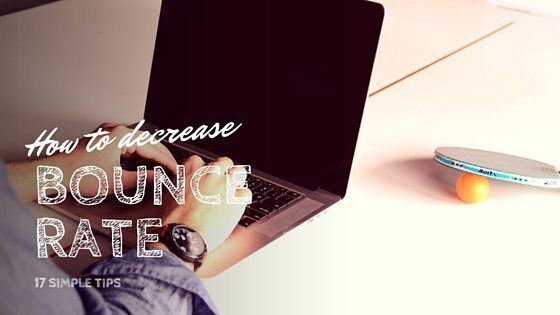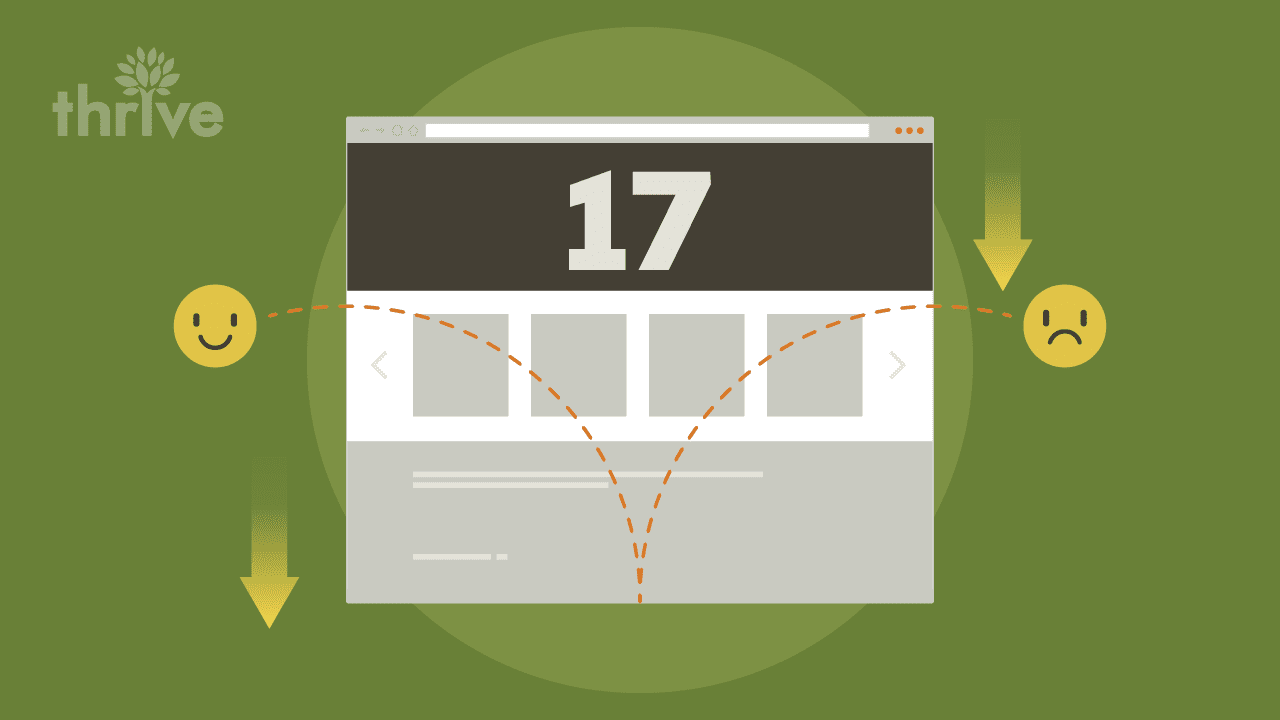
Pogo sticks, basketballs, trampolines, toddlers on a sugar high – there are many cases where more bounce is better (well, that last one depends on how much energy you have as a parent), but a website isn’t one of them. Every website has visitors who enter and then, without staying long or reading much, decide to leave (or “bounce”). The more people who enter then exit your site without engaging meaningfully, the higher your site’s bounce rate. As we’ve mentioned before, a high bounce rate isn’t always a bad thing (Head this way to learn when Bounce Rate does and doesn’t matter; you might be one of the lucky ones!) but chances are you’d rather learn how to decrease bounce rate and bring those numbers down. Let’s start with these 17 straightforward ideas that will prove to visitors (and search engines) that your website is worth exploring!
Here’s how to decrease bounce rate:
- Attract the right visitors. Getting as many people as possible to click on your website link might sound like a solid strategy, but it’s not. Focus on capturing the attention of your target market, because anyone else that stumbles into your site and doesn’t need what you’re offering is just going to back right out and drive your bounce rate higher.
- Create landing pages that satisfy users’ queries. Don’t promise answers if you don’t have them. Internet users are searching for products, services, and information, and they won’t waste time on a web page that promises to give them what they’re looking for and then doesn’t deliver.
- Speed up load times. This is a no-brainer – a web page that takes an extra second to load significantly reduces conversions, page views, and yes, significantly increases bounce rate, so do whatever you can to speed up your site’s loading times.
- Use intuitive site organization. If you didn’t figure it out from the speed tip above, internet users are an impatient bunch. If they arrive on your web page and don’t see the information they need where they expect it to be, they’re gone. Place important content front and center where visitors look first.
- Maintain a polished website design. An appealing layout, pleasing color contrasts, lots of clean white space, practical organization, prominent buttons, high-quality images, etc. all communicate in an instant that the visitor made the right choice in coming to the site. Even if you have a great product or the perfect data, users won’t wait to find that out if your site’s design is unprofessional or outdated.
- Make sure your site is mobile-friendly. More Google searches occur on mobile devices than on computers, and you’d better believe that mobile users now expect websites to support mobile layouts and function and will leave any site that doesn’t in the dust. Make sure your site is mobile-friendly and avoid losing the interest of your target market when they come to your site via smartphone.
- Create readable, scannable content. A broad vocabulary and lengthy exposition are assets when you’re writing a thesis paper, not creating web content that aims to grab and keep the attention of internet users. Website visitors like to quickly scan web content in order to find what they want to know faster and long words and longer sentences only slow them down. The simpler, more digestible the content is on your site, the better the chance it will actually be read by your visitors. Use the Flesch–Kincaid Readability Test and make sure your copy appeals to and satisfies your target audience.
- Divide content into sections. People entering your site will be intimidated by long walls of text or even simple paragraphs if they’re not formatted in interesting ways. Break up paragraphs with headers, use bullet points and numbered lists, apply block quote formatting where applicable; these are all fairly basic web content text editing options, so make sure you use them.
- Don’t force slideshow navigation. A trend that has spread – like a bad cold – amongst certain websites is the placement of web content into a slideshow format; the only way to continue reading is to click from slide to slide, further and further away from where you entered the site, without any guarantee that you’ll find what you came for. People hate content slideshows. It might seem like a great way to get people to click further into your site, but clicking through a slideshow requires so much commitment for so little return, that many users won’t even bother. As I said previously, internet users are impatient, they want content front and center, not buried throughout multiple slides. If you want to reduce the bounce rate on your site, DON’T force your visitors to view content by clicking through a slideshow.
- Set up clear calls-to-action (CTAs). Your landing page might contain the content a user wants to see, but they’re still going to leave unless you provide them with clear direction on where they need to go next on your site. This is where prominent calls-to-action are essential. Compelling, visible CTAs that promise to give users more of what they’re looking for help direct traffic further onto your site, significantly reducing bounce rate.
- Display related or popular posts. Listing related posts prominently on each blog post page points visitors towards more content that they’ll find interesting. Displaying popular posts calls visitors’ attention to content that has the best chance at keeping their attention and presence on your site. Both methods are excellent ways to drive visitors deeper into your site and further away from the return button.
- Utilize internal linking. Similar to related posts, internal linking provides channels for your site visitors to explore as they search for more information. Internal linking is also a fantastic search engine optimization technique for targeting keywords and improving rankings in SERPs. Internal linking is a win/win!
- Keep ads to a minimum. Yes, your site is ultimately yours to do with as you choose. However, you’re not going to make a lot of money if you plaster your landing page with ads, as visitors will know right away that you’re more concerned with ad revenue than providing valuable content. Keep ads to a tasteful minimum and you’ll avoid scaring visitors away from your site.
- Include a search bar. A search bar is a highly useful feature on every site, yet very few websites place them prominently or even include them at all. Search bars are like safety nets – if a visitor lands on your page and doesn’t see what they’re looking for, they’ll use your (hopefully clearly visible) search bar instead of quickly exiting.
- Any links off the site should open in a second window. It’s common sense – if you want to keep people on your site, don’t send them away. Linking to other sites is necessary (and sometimes advisable) for your website, but set any outward links to open in a second tab instead of the same page.
- Implement (non-aggressive) exit pop-ups. A well-designed pop-up that gently prompts users before being easily closed out can be an excellent tool for encouraging users to engage with your site. However, approach the pop-up feature with care, because an obnoxious pop-up can alienate site visitors and increase bounce rate.
- Run a page level survey. Finally, sometimes running a page survey with users, either in a sidebar or as a single question and answer pop-up (“Is this what you were looking for? Yes or No”), is a great method for assessing whether or not your landing page is actually useful to visitors and helping to lower your bounce rate. If you get a lot of “No, this page didn’t have what I was looking for!” then you’ll know you need to make some of the changes we’ve listed above.
Now you know how to decrease your bounce rate!
Or at least it’s a start. Implementing even just a few of the ideas above can go a long way to ensuring that the people who land on your site actually want to be there and will quickly find the answer (your answer!) to their search.
If you’d like to decrease your bounce rate but don’t have the time to work on your landing pages, contact Thrive. We’ve got some killer search engine optimization strategies that will start lowering your bounce rate percentage immediately!
